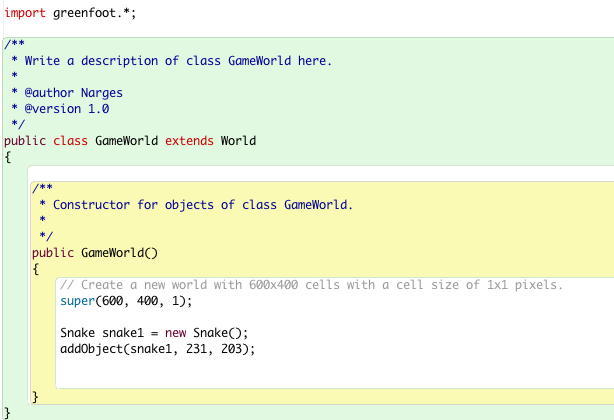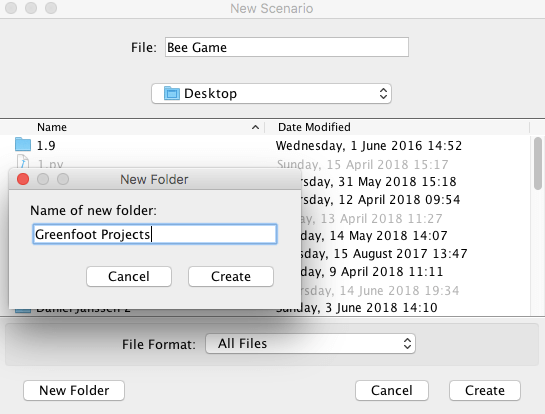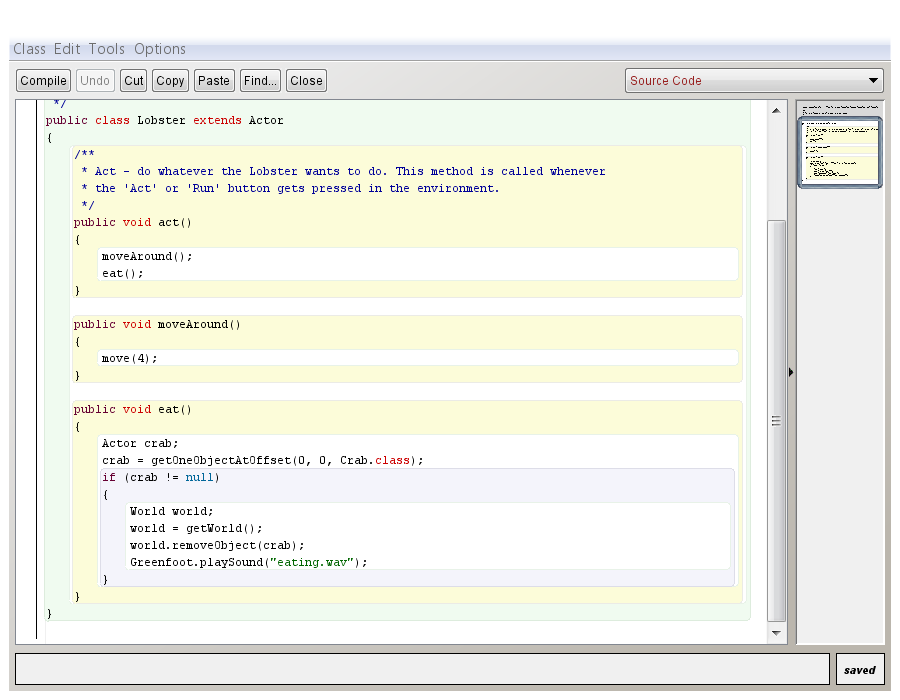
- Greenfoot add object to world from actor manual#
- Greenfoot add object to world from actor full#
- Greenfoot add object to world from actor code#
- Greenfoot add object to world from actor simulator#
- Greenfoot add object to world from actor free#
(I will explain what I mean by one step later.) If the button labeled Run is clicked, the spider will move in incremental steps toward the lower right corner. Each time the button labeled Act is clicked, the spider will move one step to the right and one step down. This scenario is designed to animate the spider and cause it to move diagonally down and to the right across the stage toward the lower right corner.Īt the bottom of Figure 1, you see a button labeled Act and another button labeled Run.
Greenfoot add object to world from actor code#
An object is the thing that is constructed from those blueprints.Ī little later, I will show you the Java code that produces the behavior that I am about to describe. For now, suffice it to say that a class is analogous to a set of blueprints or plans from which something can be constructed. I have much more to say about classes and objects in other lessons on my website (see Dick Baldwin’s Programming Tutorials in Resources). The spider is the visual manifestation of an object created from the class named MyActor shown in the class diagram on the right.Ī quick explanation of classes and objects This stage is the visual manifestation of an object created from the class named MyWorld shown in the class diagram on the right in Figure 1. I want to make certain that I am using proper terminology throughout, even when I haven’t yet explained that terminology. If so, you will simply need to bear with me at this point. If you are a beginner in OOP, you may not yet know about classes and objects. Note, however, that there could be many actors in a more complicated scenario.) Classes and objects (In this scenario, there is only one actor, which is represented by an image of a spider. The blue rectangle on the left in Figure 1 is the stage upon which the actors perform. This is an animation scenario involving a stage and an actor. Visual manifestation of the Greenfoot IDE. The visual manifestation of the Greenfoot IDE, version 1,4,1 is shown in Figure 1.įigure 1.

I’m going to begin by giving you a look at a very simple Greenfoot scenario. You will find a consolidated index at A simple Greenfoot scenario I recommend that you also study the other lessons in my extensive collection of online programming tutorials. Class definition code for the class named MyActor. Class definition code for the class named MyWorld. Method inheritance information for a MyActor object. Result of selecting the new MyActor() option. Dialog for specifying name and image for new class. I recommend that you open another copy of this document in a separate browser window and use the following links to easily find and view the figures and listings while you are reading about them. For purposes of this tutorial, the two terms are interchangeable. Publish the scenario on the Greenfoot web site for review and comment by others.Īs a matter of clarification, most of the Greenfoot documentation uses the word scenario to describe what might be referred to as a project in other programming environments and IDEs.Export the scenario as an application in an executable JAR file.Export the scenario as a Java applet in a JAR file with an accompanying HTML file.Execute the scenario (project) inside the IDE, either in single-step mode or run mode.Included in that power is the ability to do any or all of the following: Greenfoot is powerful because it allows for the use of the same Java code that an advanced Java programmer would use in a major Java project. Greenfoot is fun and engaging because Greenfoot makes it relatively easy for novice programmers to create 2D games, animations, and simulations.

(Note that your browser must support Java 1.5 or later for this applet to run properly.)
Greenfoot add object to world from actor manual#
Flip the switch on the upper left to switch between manual operation and an oscillator.

Move the Amplitude, Frequency, and Damping sliders to change the physics of the simulation.

Click the Run button at the bottom and move the blue bead to activate the wave motion.
Greenfoot add object to world from actor simulator#
A harmonic wave simulatorĬlick here to open a page containing a harmonic wave simulator in a separate browser window (or in a separate tab on your browser).
Greenfoot add object to world from actor full#
Greenfoot provides a painless, fun, and engaging entry point for novice programmers but also supports the full power of the Java programming language for more advanced programmers.
Greenfoot add object to world from actor free#
Greenfoot is also available free of charge. Greenfoot is a combination of a Java IDE that provides a class browser, compilation, interactive execution, single-step execution, a code editor, etc., on one hand and a framework for creating two-dimensional animations, games, and simulations on the other hand (see Greenfoot Home in Resources). Scratch is not a serious programming language.


 0 kommentar(er)
0 kommentar(er)
